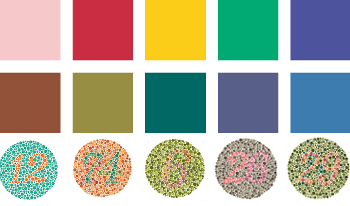
The topic of how colour emotion and colour vision deficiencies interact with each other is barely researched, and existing studies have contradicting results. This study will investigate how these two topics interact with each other and try to prove that colour emotion is affected by colour vision deficiencies. This was done through an online colour-emotion associations questionnaire in two phases. The first phase had 60 participants, of which 15 reported having colour vision deficiencies and the second had 18 participants, of which 8 were identified to have colour vision deficiencies. Within the questionnaires, the participants selected emotions from the Geneva Emotion Wheel which they associated with 12 colour patches or 4 colour terms and then rated how strong this association is from 1 to 5. Results show indications that colour vision deficiencies lead to reduced strength of colour-emotion associations and a higher number of people who do not associate emotions with certain or all colours. Additionally, it was found that the colour vision deficiency group associates fewer emotions with each colour than the normal vision group and differences in specific colour-emotion associations were found between the two groups.

Nonlinear CMOS image sensor (CIS) technology is capable of high/wide dynamic range imaging at high frame rates without motion artifacts. However, unlike with linear CIS technology, there is no generic method for colour correction of nonlinear CIS technology. Instead, there are specific methods for specific nonlinear responses, e.g., the logarithmic response, that are based on legacy models. Inspired by recent work on generic methods for fixed pattern noise and photometric correction of nonlinear sensors, which depend only on a reasonable assumption of monotonicity, this paper proposes and validates a generic method for colour correction of nonlinear sensors. The method is composed of a nonlinear colour correction, which employs cubic Hermite splines, followed by a linear colour correction. Calibration with a colour chart is required to estimate the relevant parameters. The proposed method is validated, through simulation, using a combination of experimental data, from a monochromatic logarithmic CIS, and spectral data, reported in the literature, of actual colour filter arrays and target colour patches.